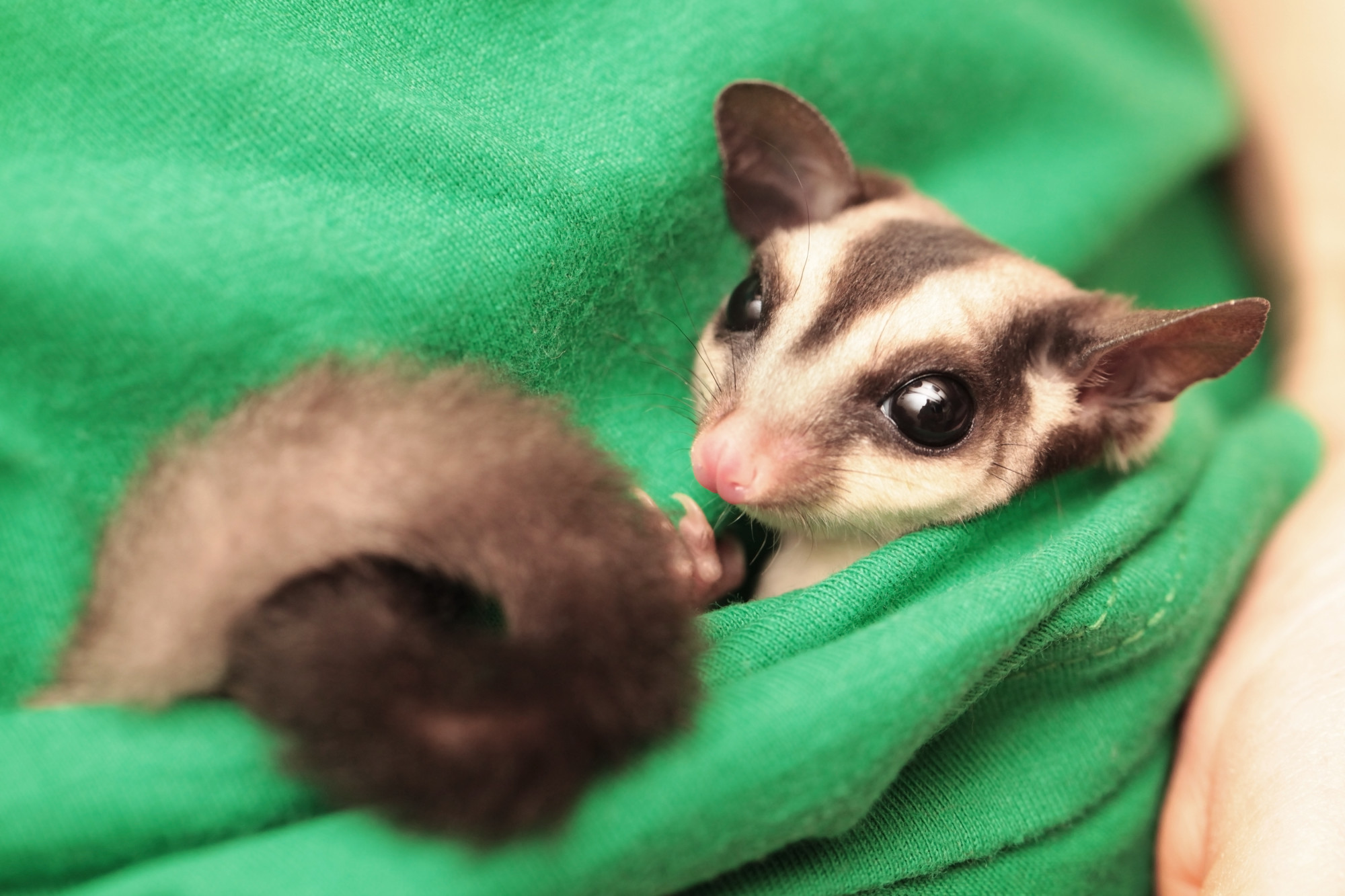
How to Take Care of Your Pet Sugar Glider
With a name like sugar glider, you better believe these little animals are cute and exotic. These little marsupials from Australia and Indonesia get their name from a combination of their sweet tooth and their incredible ability to glide.
Sugar gliders are adorable and can make great pets, but they also require serious attention and commitment.
Keep reading for some basic information on how to care for your sugar glider that will help as you prepare for a sweet addition to your family.
What Makes a Sugar Glider Unique
Imagine owning a pet that can glide distances of up to 165 feet, or about half a soccer field! These little guys accomplish this by using the thin, wing-like membrane that goes from their front paw to back paws. In the wild, they jump and glide through the trees.
They have opposable thumbs, like humans, and it can be fun to watch them use them to play and eat.
They are marsupials and like to go along with you in a large pocket or pouch. It’s a bonding experience!
Living Space
Sugar gliders will require a cage of at least two feet wide, two feet long, and three feet high. For adults, bigger is better, so they can glide a little more.
They can’t be toilet trained like a cat or dog, so the cage will need wood shavings on the bottom. They like to hide away in a nest, which should be placed near the top of the cage.
But they don’t need to stay in the cage all day! Let them out as much as you can. Speaking of “out,” make sure the latch is secure–they’ve been known to cleverly escape.
Interaction
They love socialization, getting to know their owners, and playing with toys. Take them out often, and they will create a strong bond like other pets.
They are curious, smart, and playful animals.
Food and Water
Their diet should be about 3/4 fruits and vegetables. As their name suggests, they tend to go for the sweeter ones. The other 1/4 should be protein like meat, yogurt, or even live insects (not from outside though).
Of course, sometimes you may want to spoil your pet with specially designed sugar glider treats, just as you would a cat or dog.
Always have fresh water available, even if you can’t tell they’re drinking very much.
Health
Just like any pet, proper veterinary care is crucial to keep sugar gliders healthy. Follow all your vet’s recommendations.
Some common health issues include a calcium deficiency, parasites, constipation or diarrhea, and stress. These are all addressed through proper diet, socialization, and living space.
Bring on the Sugar Gliders
If you are considering one as a pet, then you’re familiar with all the unique and adorable ways a sugar glider can pique our interest.
From their impressive climbing and gliding to their intelligence and playfulness, they can be a great addition to your family. Just be sure to provide the right food, environment, and socialization!
Please stay tuned here for many more great household articles!
